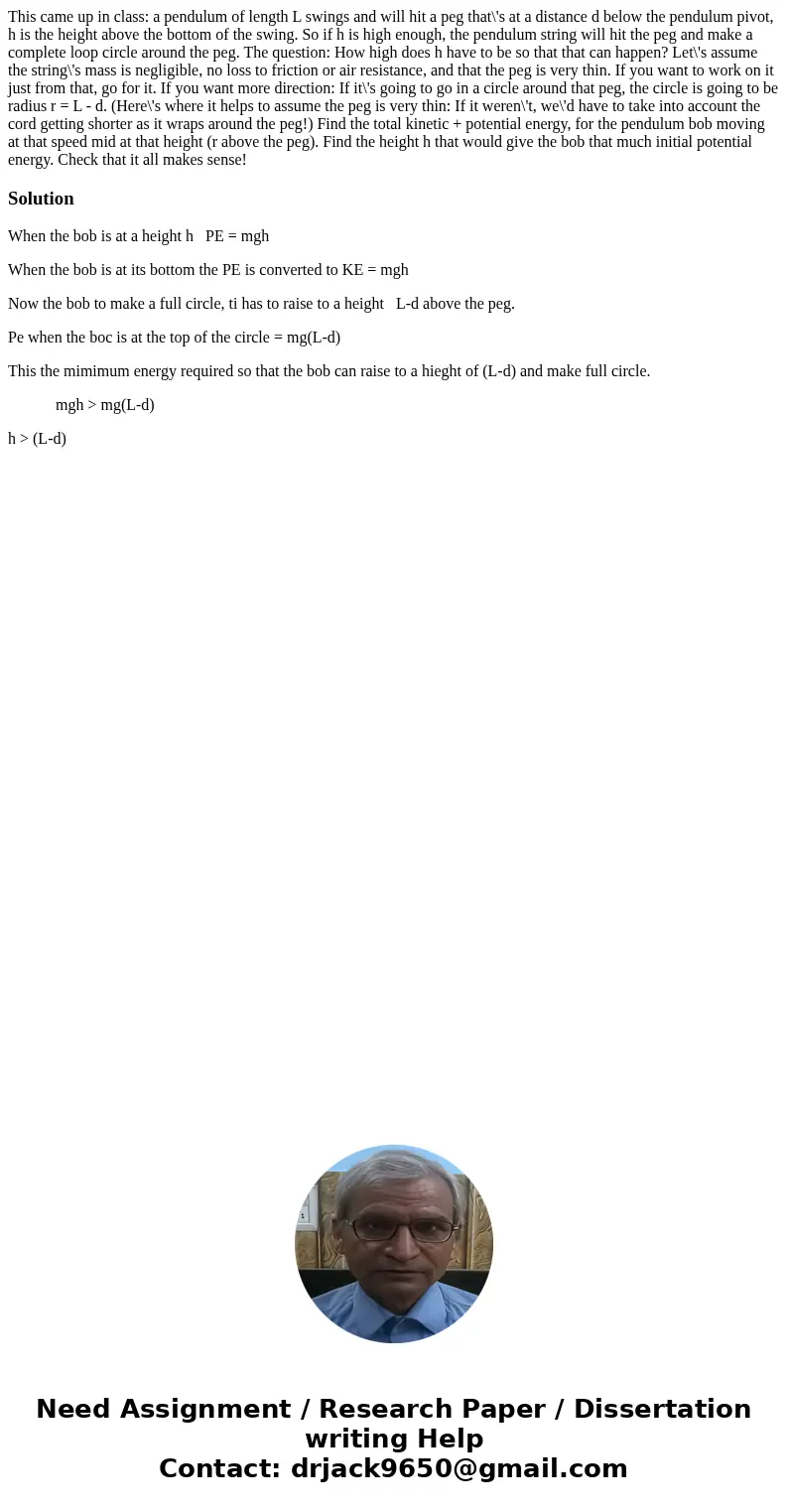This came up in class a pendulum of length L swings and will
This came up in class: a pendulum of length L swings and will hit a peg that\'s at a distance d below the pendulum pivot, h is the height above the bottom of the swing. So if h is high enough, the pendulum string will hit the peg and make a complete loop circle around the peg. The question: How high does h have to be so that that can happen? Let\'s assume the string\'s mass is negligible, no loss to friction or air resistance, and that the peg is very thin. If you want to work on it just from that, go for it. If you want more direction: If it\'s going to go in a circle around that peg, the circle is going to be radius r = L - d. (Here\'s where it helps to assume the peg is very thin: If it weren\'t, we\'d have to take into account the cord getting shorter as it wraps around the peg!) Find the total kinetic + potential energy, for the pendulum bob moving at that speed mid at that height (r above the peg). Find the height h that would give the bob that much initial potential energy. Check that it all makes sense!
Solution
When the bob is at a height h PE = mgh
When the bob is at its bottom the PE is converted to KE = mgh
Now the bob to make a full circle, ti has to raise to a height L-d above the peg.
Pe when the boc is at the top of the circle = mg(L-d)
This the mimimum energy required so that the bob can raise to a hieght of (L-d) and make full circle.
mgh > mg(L-d)
h > (L-d)

 Homework Sourse
Homework Sourse